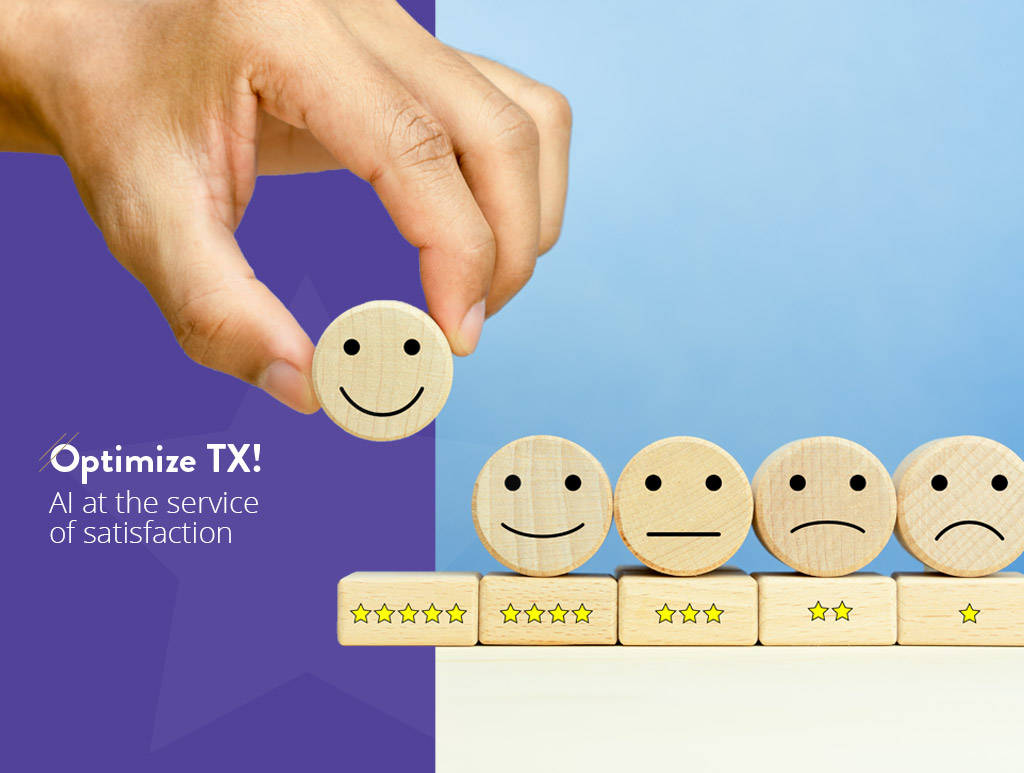Every company wants its customers to say “Wow, that was a great shopping experience, I’ll be back!”. But delivering a customer experience that will make consumers want to stay loyal to your brand is a major challenge. Similarly, keeping employees happy is usually the desired goal for employers, but is not always easy to achieve.
Fortunately, more and more tools such as artificial intelligence , big data or marketing automation are available to us and allow us to better understand these challenges.
What is the “total experience”?
The total experience (or TX) aims to satisfy everyone’s needs and expectations. It is about identifying the interactions between the different stakeholders in order to improve the customer, user and employee experience (all in one!). Many companies are already investing in sophisticated AI-supported technologies to improve this TX. The goal: a more natural and frictionless experience for everyone.
In this article, we give you an overview of the role AI can play in your strategy and how it can improve the total experience.
Optimise the user experience
In a way, the user experience (UX) is the starting point that led companies to TX. Many managers are concerned about the UX because it is a prerequisite for being successful (both online and offline). Indeed, today’s Internet users are used to surfing on user-friendly platforms. They expect a smooth and pleasant experience everywhere and all the time. This is the case when they shop in an e-shop but also when they compare information in order to make a purchase in a shop later. It is therefore important, if not already the case, to put the user at the centre of your digital strategy.

“But how can AI help me convince a customer?”
By offering real-time interactions as well as interface personalisation ! Of course, the user, although concerned about privacy, wants to be recognised when they return to a site they have already visited. It is not possible to ask them to enter their personal data again, as this would lead to frustration. But personalisation can go much further! For example, you can highlight the content that is most relevant to them and make recommendations based on behavioural data and real-time information. This is the case for Spotify, which offers personalised playlists to each person.
Then, AI can also be used to set up a chatbot available 24 hours a day to guide the user in their browsing and answer their questions. This chatbot of course recognises the user if they have already interacted with it and continues the conversation in a natural way.
To go even further, you could also consider offering dynamic pricing, design and content depending on the user and the stage there are at in the customer journey . In short, AI enables a tailored UX.
Optimise the customer experience
Once the user becomes a customer, it is just as important, if not more important, to continue to provide an optimal customer experience. The customer experience includes not only the user experience (mainly pre-purchase), but more generally every interaction the customer has with your brand before and after the purchase, the purchase itself and also the after-sales service.
Here again, AI can be your best ally! Functionalities such as facial recognition can simplify and accelerate the payment process. Chatbots, again, can provide instant and efficient after-sales service. In addition, you can use big data and predictive marketing to identify potential pain points in the customer journey and resolve them before they occur. Finally, AI allows you to predict future revenues and be proactive.
The result? Better engagement, clear and targeted communication, but above all, fewer complaints, fewer calls to handle, better ROI, increased customer loyalty, and more sales!
Optimise the employee experience
Let’s take an even more holistic view by including the employee experience. As you can see, the use of AI has many advantages in terms of your processes. Thanks to automated intelligent suggestions, chatbots, personalisation of the purchase journey… you make your employees’ lives much easier!
Moreover, AI and big data are already helping large companies to optimise many areas, including smoother deliveries (thanks to the consideration of various variables in real time) and better overall productivity. These improvements also boost staff motivation and satisfaction. For example, AI will be able to take over repetitive or tedious tasks such as paying invoices or sorting data.
In conclusion, artificial intelligence is a very effective tool that, when used properly, can give you a significant competitive advantage and increase the well-being of your company. It allows you to understand your users, your customers and your employees, and to identify their needs in order to satisfy them in the most efficient way possible.
Your digital partner since 1999



